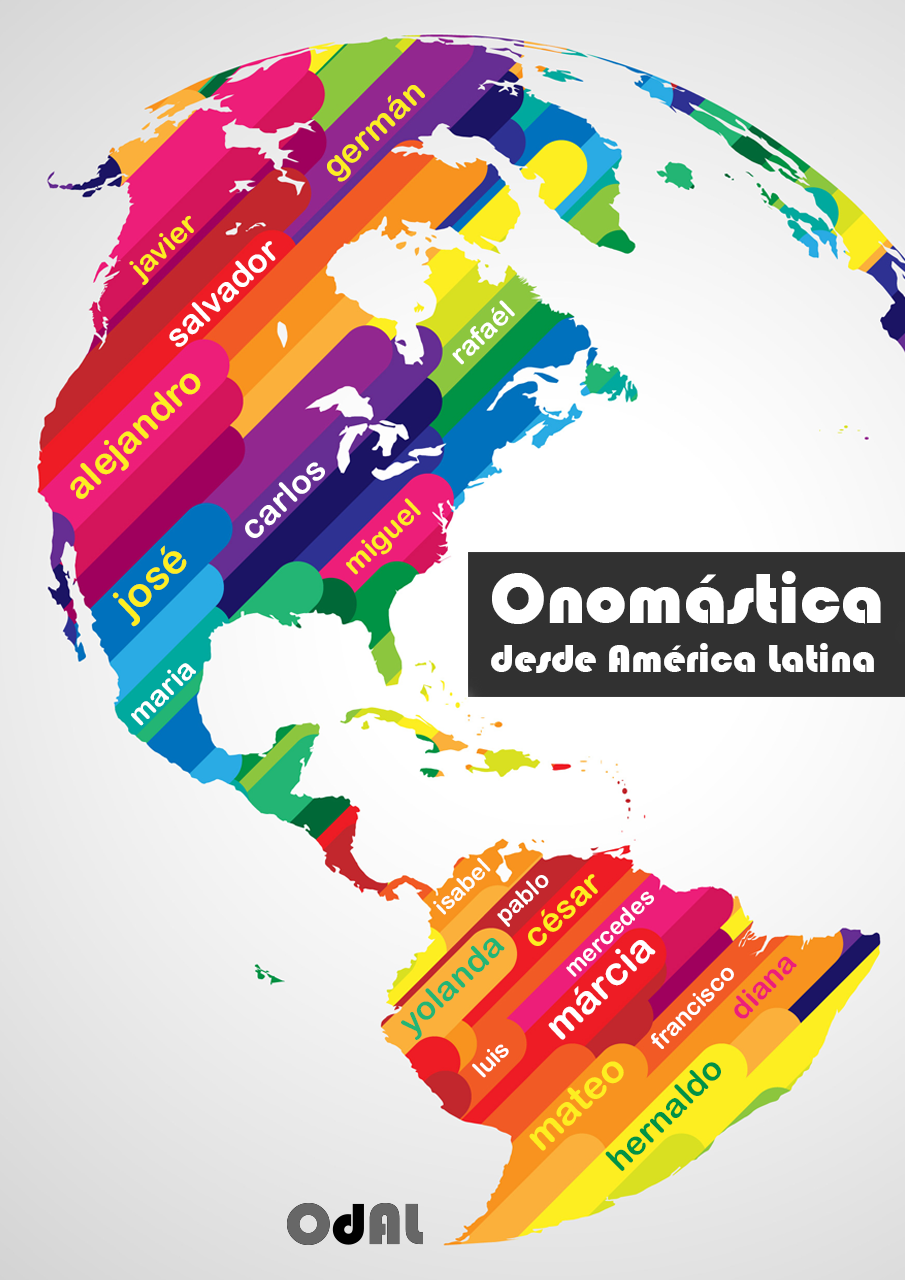Anthroponyms in the culture class in Spanish as a Foreign Language (SFL)
DOI:
https://doi.org/10.48075/odal.v4i1.30953Keywords:
Anthroponomastics, Socionomastics, onomastic competence, sociocultural competenceAbstract
This paper investigates the anthroponyms of famous personalities that appear in teaching materials for teaching Spanish as a foreign language (ELE). Based on a corpus of 24 textbooks from different periods and at different levels of learning, a fairly extensive corpus has been compiled, with almost 1900 names. The analysis of this corpus, specifically of those which have more than one recurrence, allows us to see the trends in the selection of cultural content in the ELE classroom: the scarce presence of women, the majority of the personalities present are of Spanish origin, the current period is the best represented and the literary sphere, together with other artistic areas, are the most frequent thematic environments. The value of these data allows us to claim onomastic competence as an inexcusable part of an integral communicative competence.
References
Álvarez Baz, A. (2003). La interculturalidad en la clase de ELE. Estudio de campo. En Pérez Gutiérrez, M. y Coloma Maestre J. (eds.) El español, lengua de mestizaje y la interculturalidad. Actas del XIII Congreso Internacional de la Asociación para la Enseñanza del Español como Lengua Extranjera, (pp. 120-129), ASELE.
Bravo-García, E. (2018). La competencia cultural: desarrollo y límites en la docencia. Revista Electrónica del Lenguaje. Monográfico, 5.
Coseriu, E. (1985). Linguistic Competence. What Is It Really? The Modern Language Review, v. 80: 4, 25-35.
Felecan, O. (ed.) (2012). Name and Naming: Synchronic and Diachronic perspectives. Cambridge Scholars Pub.
Fernández Juncal, C. (2002). Algunos datos socionomásticos de una comunidad de la región funcional de Salamanca. En J.A. Bartol Hernández, S. Crespo Matellán, C. Fernández Juncal, C. Pensado Ruiz, E. Prieto de los Mozos y M.N. Sánchez González de Herrero (eds.), Nuevas aportaciones al estudio de la lengua española. Investigaciones filológicas (pp. 257-264), Luso-Española de Ediciones.
Fernández Juncal, C. (2018). Evolution of Anthroponyms in an Area of Linguistic Transition: A Socio-Onomastic Study. Names, 66:2, 85-95.
Illescas, A. (2016). La competencia intercultural y su inclusión en los manuales de ELE. Porta Linguarum, 26, 67-79.
Instituto Cervantes (2006). Plan curricular del Instituto Cervantes. Niveles de referencia para el español (PCIC). Biblioteca Nueva.
Kleiber, G. (1995). Sur la définition des noms propres: une dizaine d’années après. En Noailly, M. (ed.), Nom propre et nomination. Actes du Colloque de Brest (pp. 11-36), Université de Toulouse-Le-Mirail.
López Franco, Y. (2014). En torno al semantismo de los Nombres propios. Entre debate y síntesis teórica. Trama, 10-20, 69-81.
Miquel, L. y Sans, N. (2004). El componente cultural: un ingrediente más en las clases de lengua. redELE, revista electrónica de didáctica/español lengua extranjera 0
Morant, R. (2016). La antroponimia en la atención sanitaria. Círculo de Lingüística Aplicada a la Comunicación, 66, 278-300.
Moreno Fernández, F. (2005). Aportaciones de la sociolingüística. En J. Sánchez Lobato e I. Santos Gargallo (dirs.), Vademécum para la formación de profesores (pp. 85-104), SGEL.
Ortega Ojeda, G. (1994). La competencia onomástica dialectal, a propósito de caso canario. Revista de Filología de la Universidad de La Laguna, 13, 291-307.
Pepin, N. (2006). Proper Names in Second Language Classroom Interaction: An Initial Investigation into the Use of First Names in Instruction Sequences. En Ahrens, W, Embleton, S. & Lapierre, A. (Eds.), Proceedings of the 23rd International Congress of Onomastic Sciences. Names in Multi-Lingual, Multi-Cultural and Multi-Ethnic Contact (pp. 800-810). York University.
Primo Doncel, S. (2020). La interculturalidad y la competencia sociocultural en el aula de EL2 para inmigrantes. Universidad de Alcalá.
Seide, M.S. (2021). Proposal of interdisciplinary definition of proper name. Onomástica desde América Latina, n.4, v.2,2022, https://doi.org/10.48075/odal.v2i4.28007
Sercu, L. (2000). Acquiring intercultural communicative competence from textbooks: the case of Flemish adolescent pupils learning German. Leuven University Press.
Simons, M. y Six, S. (2012). Los referentes culturales, la materia prima de la competencia comunicativa intercultural en la clase de ELE. marcoELE. Revista de Didáctica Español Lengua Extranjera, 14, 1-14.
Trimm, J.M.L. (1992). Language teaching in the Perspective of the Predictable Requirements of the Twenty-first Century. Problems and Prospects. AILA Review, 9, 7-20.
UNESCO (2002). Declaración Universal sobre la diversidad cultural. https://www.congreso.es/docu/docum/ddocum/dosieres/sleg/legislatura_10/spl_70/pdfs/30.pdf [fecha de consulta: 20-novimebre 2021]
Van Langendonck, W. (2007). Theory and Typology of Proper Names. Mouton de Gruyter.
Zurdo, T. (2002). Apuntes sobre la discordancia cultural en la enseñanza/aprendizaje de lenguas extranjeras. Carabela, 52, 157-163.
Downloads
Published
How to Cite
Issue
Section
License
Copyright (c) 2023 María Carmen Fernández Juncal

This work is licensed under a Creative Commons Attribution-NonCommercial-ShareAlike 4.0 International License.
Creative Commons Copyright Notice
Open Access Journals Policy
Authors who publish in this journal agree to the following terms:
1. Authors retain the copyright and grant the journal the right of first publication, with the work simultaneously licensed under the Creative Commons Attribution License that allows the sharing of the work with recognition of authorship and initial publication in this journal.
2. Mandatory authorities to assume commitments, for non-exclusive distribution of the version of the work published in this journal (eg, publish in an institutional repository or as a book chapter), with recognition of authorship and initial publication in this journal.
3. Authors are allowed and encouraged to publish and distribute their work online (eg in institutional repositories or on the personal page) at any point before or during the editorial process, as this can generate productive changes as well as increase impact and citation of the published work (See The Effect of Open Access).
Creative Commons License
This work is licensed under a Creative Commons Attribution-NonCommercial-ShareAlike 4.0 International License, which allows sharing, copying, distributing, displaying, reproducing, a whole or parts as long as it has no commercial purpose and is cited by authors and a source.

